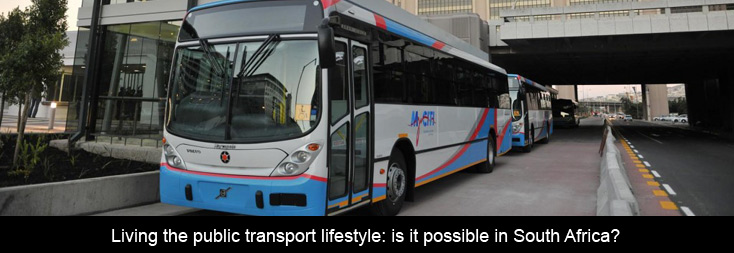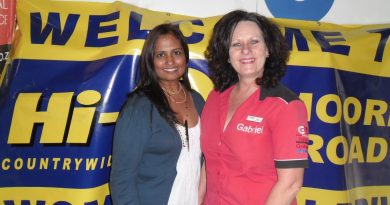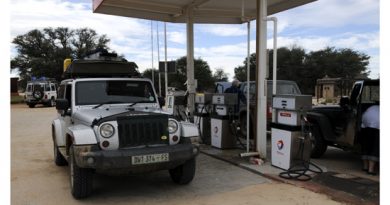Living the public transport lifestyle: is it possible in South Africa?
There is no doubt that over the last few years, transport planning has shifted its focus from a car-oriented focus to “public transport first”. This is reflected not only in new zoning schemes and parking requirements, but also in funding priorities that have facilitated the introduction of new Bus Rapid Transit (BRT) corridors and High Speed Rail (HSR) links.
The completed BRTs and Gautrain have shown that public transport can provide an appealing transport option and attract a new kind of user to the system.
But despite this positive policy-shift, a significant shift in public behaviour has yet to follow. If you own a private car, that’s the mode that’s most likely to be your first choice.
“It is not enough for local governments to simply introduce new services and hard infrastructure,” says Erwin van Dijk, Head of Land Use and Public Transport Planning at SSI Engineers & Environmental Consultants. “Municipalities continue to focus on the provision of a generic technical solution, instead of understanding and addressing a wide range of complementary and, in some cases, contradictory user needs,” he says.
“The introduction of a new system such as BRT or a scheduled bus service will, without incorporating different user needs, not provide an acceptable transport option for all.”
Van Dijk and colleague Gerhard Hitge, Head of Transport Planning and Policy Development for the City of Cape Town, are therefore proponents of what they refer to as an ‘incremental approach’ to public transport improvements – an approach more likely to provide improved public transport to the majority of residents, they believe.
They argue, for example, that although ReaVaya, Gautrain and MyCiTi have improved the image and acceptance of public transport, these large-scale improvements come with challenges and risks and are implemented at a cost that puts a large burden on developing cities.
‘Despite the quality offered through the roll-out of large-scale projects, it is a slow process, which results in poor public transport service continuing in large parts of the cities not immediately benefiting from improvements. ‘
An incremental approach can reduce some of the risks inherent in major interventions; provide the opportunity to gradually implement supporting policies; and provide improvements in a wider area, which would benefit a larger part of the population, over a much shorter time period.
“This does not necessarily mean that a widely available quality public transport is not realistic; it only needs a realistic step-by-step implementation that fits the available funding,” says van Dijk.
“Upgrading does not only have to consist of the phased roll-out of a new public transport flavour such as the BRT, but could also include incremental upgrades of existing public transport corridors.”
In other words, public transport can be improved by many small steps instead of a few extensively planned and costly large jumps. This, together with a series of supporting measures outside the transport domain, such as changes to land use and marketing, is more likely to lead to a public transport lifestyle, or a smart choice for the majority of residents.”
But what is a ‘lifestyle’? It’s a bundle of behaviours that makes sense to both others and ourselves in given time and place, including social relations, consumption, entertainment, and dress. The behaviours and practices within lifestyles are a mixture of habits, conventional ways of doing things, and reasoned actions. Although people like to think of a lifestyle as something of their creation, lifestyles are often influenced by many outside factors…
In the transport environment, this mix of habits, values and reasoned actions become apparent in activity, trip purpose, and choice of route and mode, says Gerhard Hitge, Head of Transport Planning and Policy Development for the City of Cape Town. “A public transport-orientated lifestyle is one where people need (or want) to travel, and where the public transport opportunity exists to provide access to most activities.”
Public transport opportunities, however, are not dependent on the individual, Hitge and van Dijk explain. They are co-determined by the land use and the transport planning professions, and include urban design (the urban fabric), infrastructure, operations, and communication and marketing. If even one of these ‘opportunity’ components is underdeveloped, the ‘opportunity’ will be unable to meet the needs of travellers. These components together, and not infrastructure and operations alone, will determine the actual and perceived opportunity – in other words, the existence of a bus service alone will not give a potential user enough reason to use it.
Public transport is likely to provide a better service, and thus a better opportunity for users, in cities that are well designed, for example, and have a diversity of land uses at appropriate densities. The urban environment around South African public transport interchanges, however, is mostly poor, which creates an experience that is unsatisfying to current users and prohibitive to potential new users.
“Changing the urban fabric in support of a public transport lifestyle is a long-term process and requires conviction and strong leadership to drive transformation,” says Hitge, “but it is a long way from being impossible.”
Improved operations, with additional services, different alternatives and reliable schedules, can also increase the motivation to travel. Quite simply, the current situation does not encourage a public transport lifestyle. Only BRT and the business express trains provide travel times that are reasonably competitive with private cars during peak hours. Other operations are slow and experience the same traffic conditions as private cars. There is no integrated ticketing system in place.
Communication and marketing are also essential to create a public transport lifestyle. Marketing and information campaigns can increase awareness, change community perceptions and highlight advantages of a specific service. “In fact, the lack of ‘image’ is one of the reasons public transport users aspire to own a private car,” suggests van Dijk. In South Africa, the public transport system is not marketed as a whole, and each operator does its own marketing to a greater or lesser extent. In many cases marketing is targeted at the existing users, with no campaigns to attract new users to the system.
There is virtually no coordination, and none of the operators publish schedules in print form.
So, is all lost? Can car-owners be persuaded to shift to public transport? Yes, say Van Dijk and Hitge. “It is not a lack of good practice, but rather the lack of integration, the lack of transferability of best practice, and the lack of coordination between land use and transport planning, that prevents the anticipated shift to public transport.
“The lifestyle with which we associate ourselves depends on our perceptions, experiences, attitude and values. Public transport can only be fully unlocked by combining all excellent elements into one public transport experience. Pockets of excellence are not enough.”
[Article by Gail Jennings]
Erwin van Dijk and Gerhard Hitge will be speaking at the Southern African Transport Conference on Wednesday, 11 July 2012 at 16:30. For more information or to register, book your tickets at www.satc.org.za.




